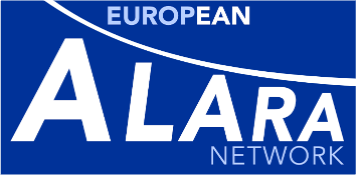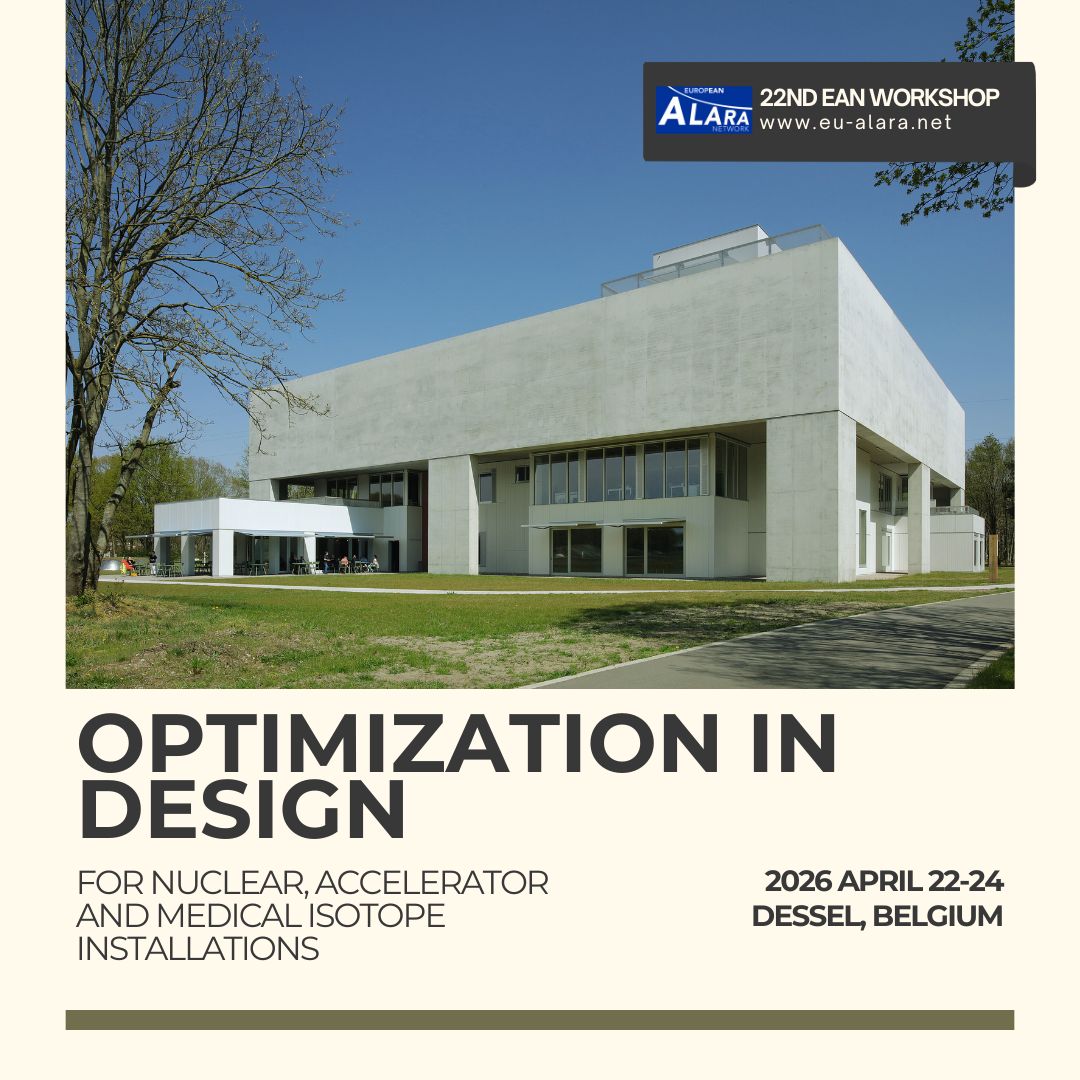🎥 The first EAN webinar is now available online!
We are pleased to share the recording of the main presentation from the first EAN webinar, titled 'Teaching: Tools and Simulation for Radiation Protection Training'.
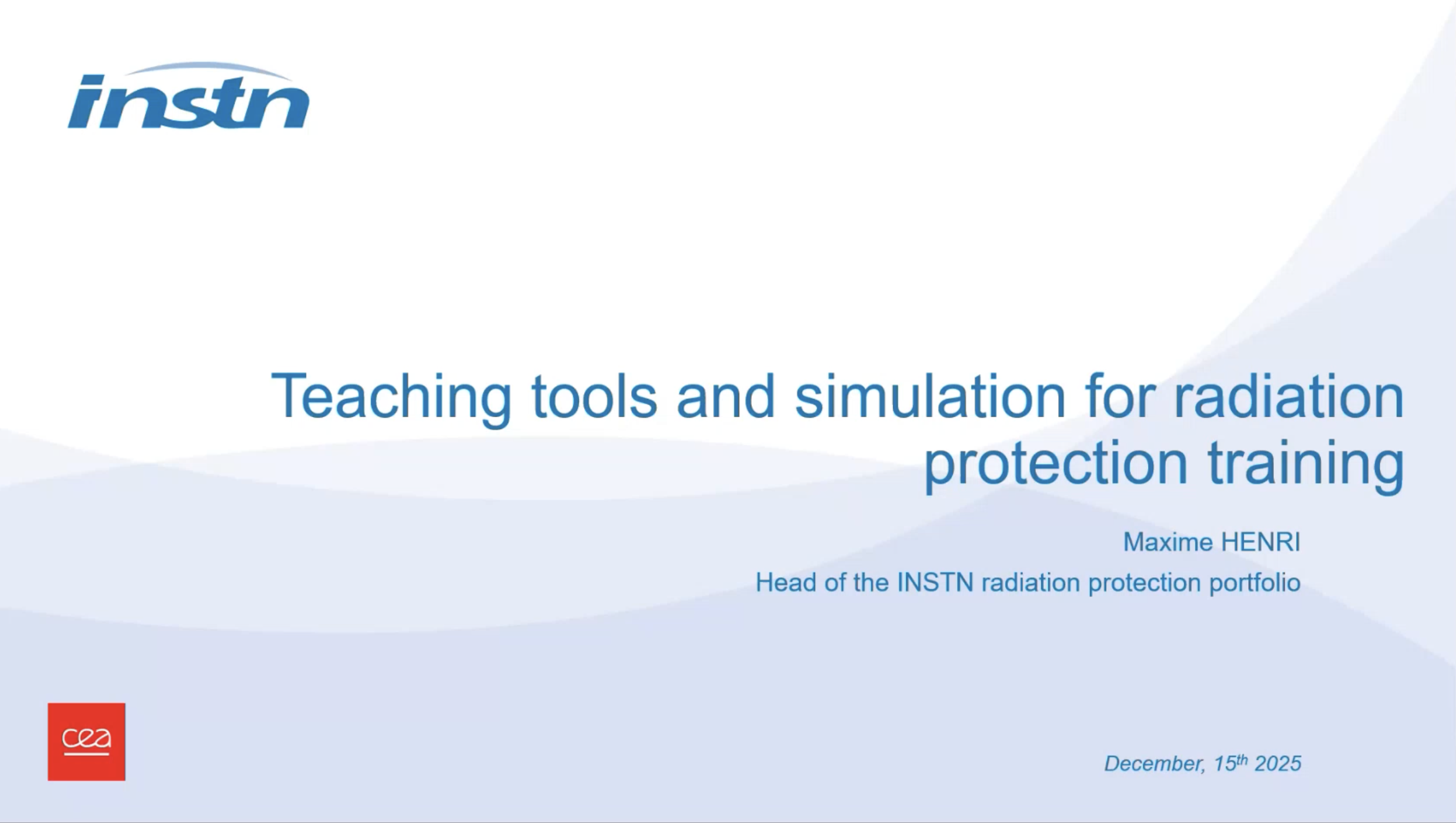
The webinar, originally scheduled for one hour, included a 30-minute presentation followed by a Q&A session. The online recording covers the presentation portion, allowing everyone to access the key information and insights shared during the webinar. ✨
▶️ You can watch the presentation here
![]()
🚀 Call for Abstracts/Posters – 22nd EAN Workshop
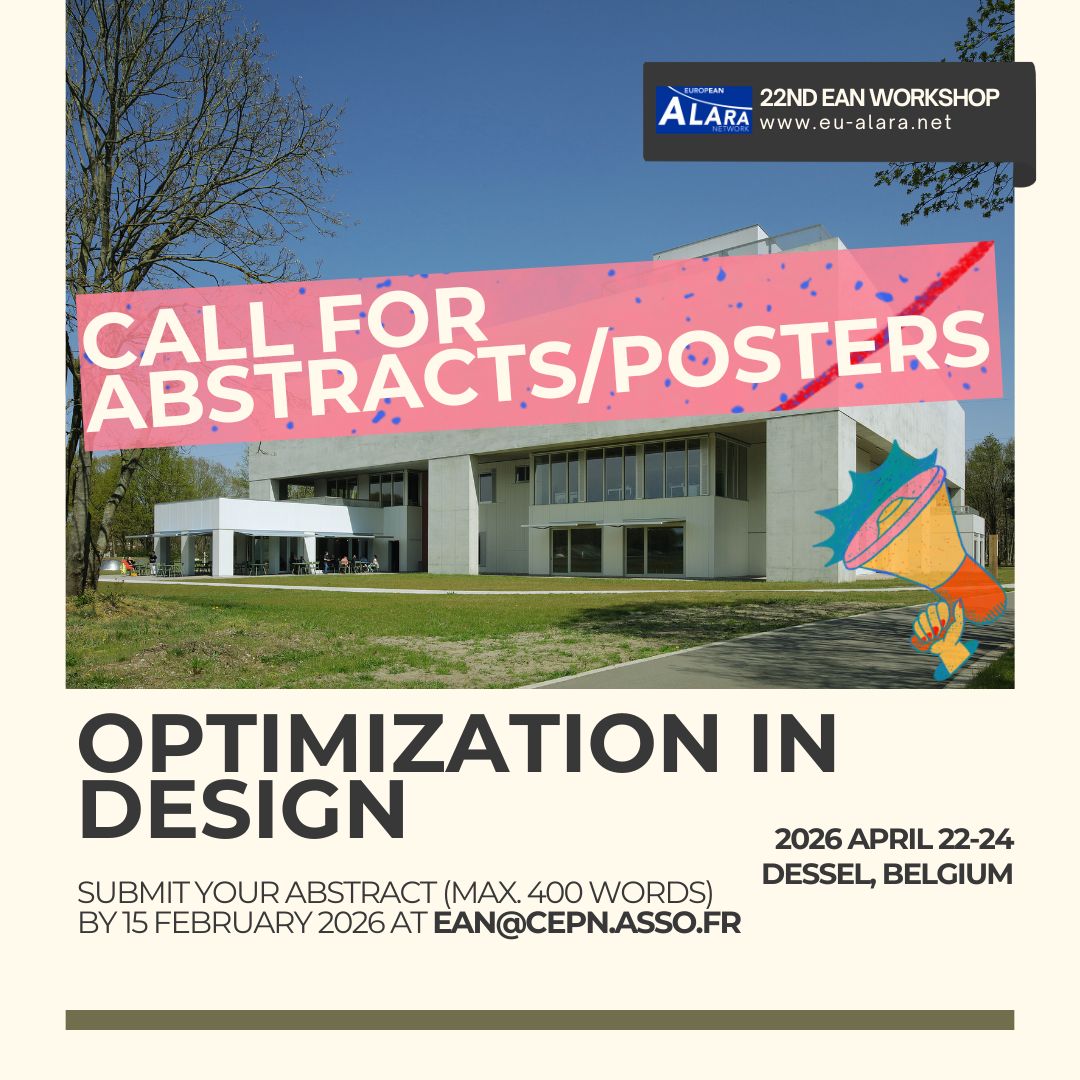
We are excited to launch the Call for Abstracts/Posters for our upcoming workshop on the Optimization of Radiation Protection in Design.
The workshop will focus on how radiation protection can be effectively integrated early in the design of nuclear, accelerator, and medical isotope installations — helping reduce doses, improve safety, and support innovation.
📅 Deadline for abstract submission: 15 February 2026
📢 First EAN webinar
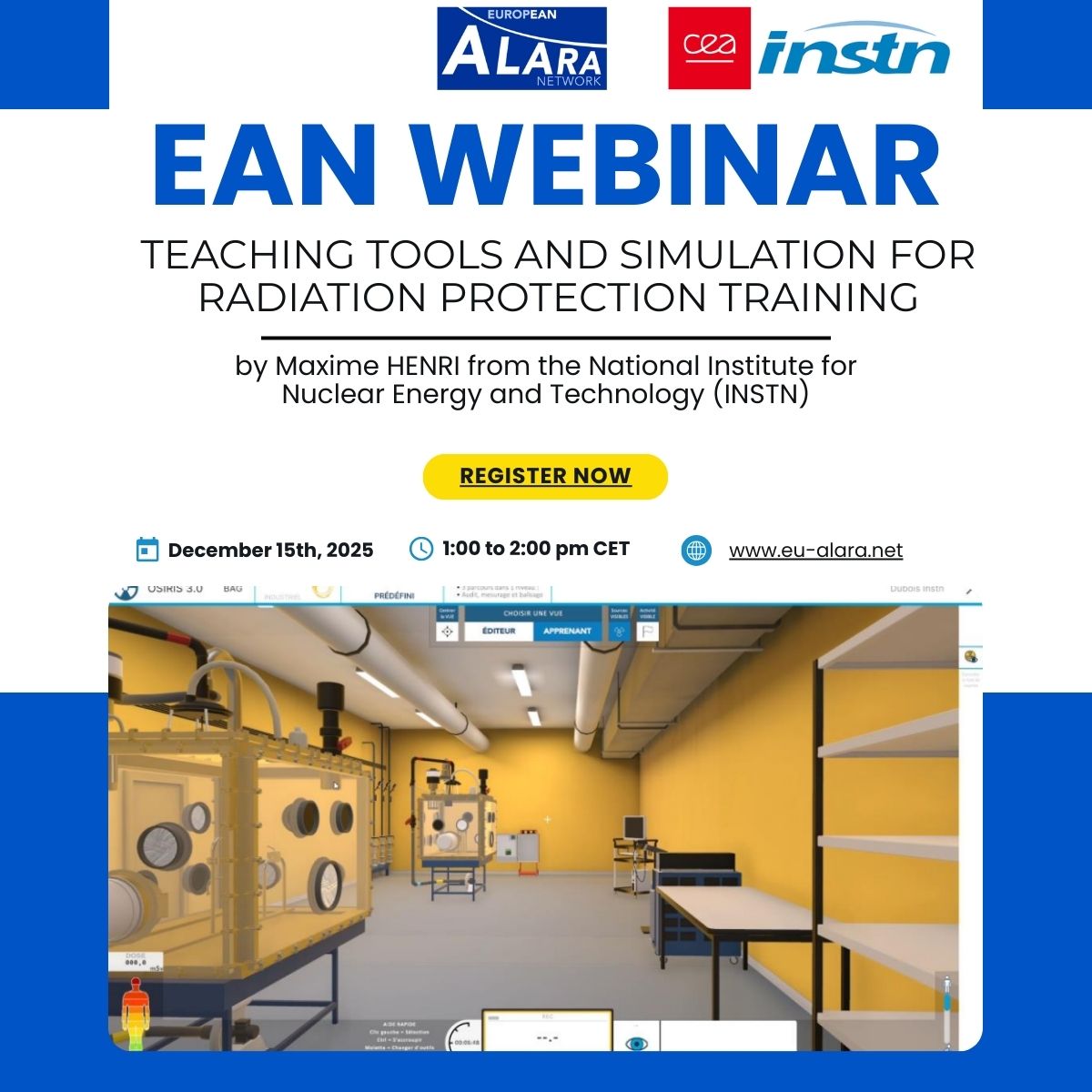
The first EAN webinar will take place on Monday, 15 December 2025, from 1:00 to 2:00 pm CET.
🔸 Maxime HENRI, from INSTN, will present: Teaching Tools and Simulation for Radiation Protection Training.
This webinar will present the various educational and simulation tools that are available nowadays for radiation protection training. INSTN developed and owns several educational tools, from training sites to virtual reality. These tools allow trainees to benefit from training situations that closely resembles the real-life conditions they will encounter in their work, while controlling or even eliminating their exposure to ionising radiation.
📌 Register here: https://lnkd.in/ex_nbGzz
Workshop Registration Now Open
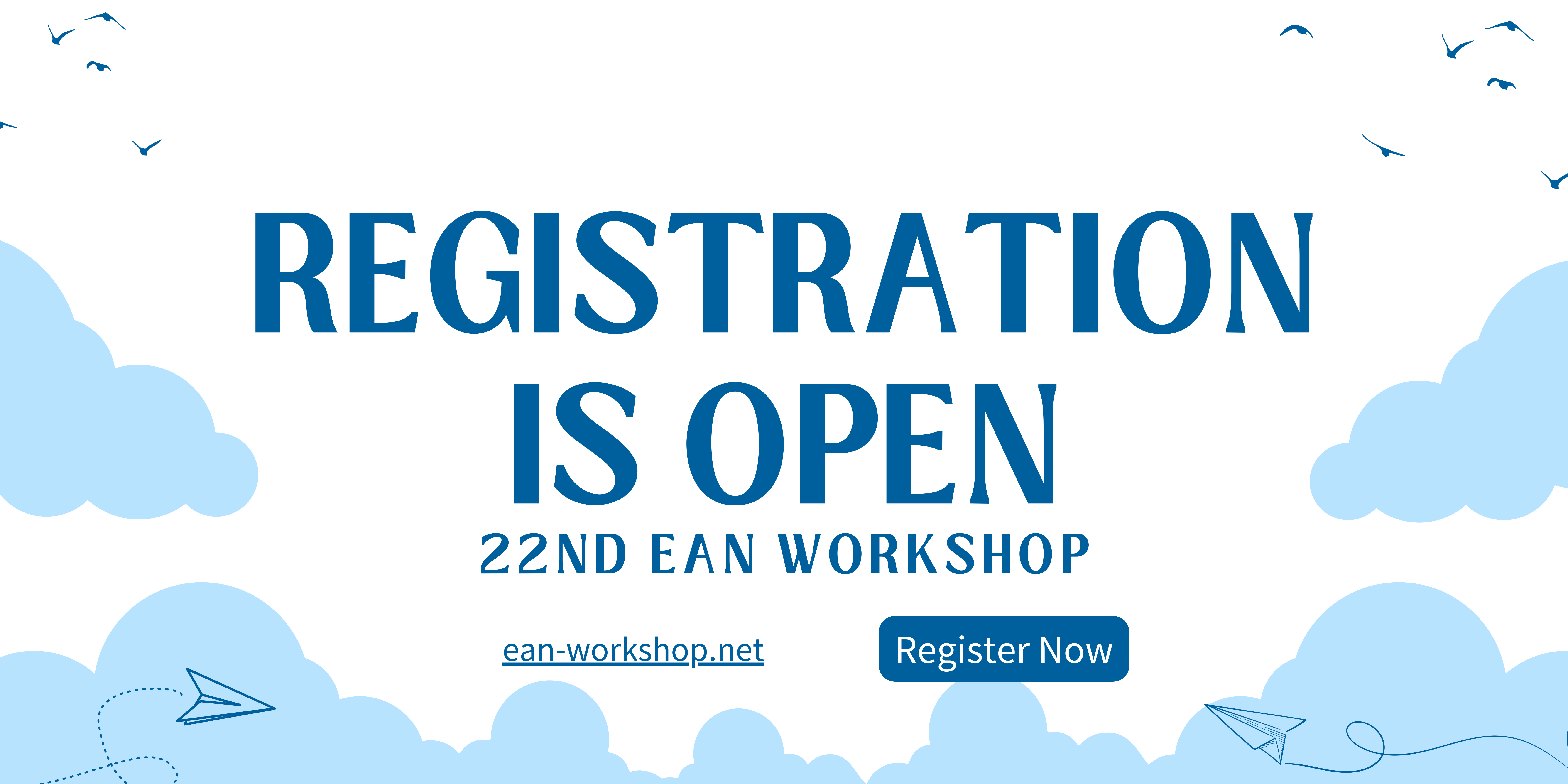
We are delighted to announce that registration for the upcoming EAN Workshop is now open!
Newsletter n°53 - Summer edition 2025
We are delighted to share with you the 53rd edition of the EAN Newsletter, bringing the latest insights and updates from the radiological protection community across Europe.
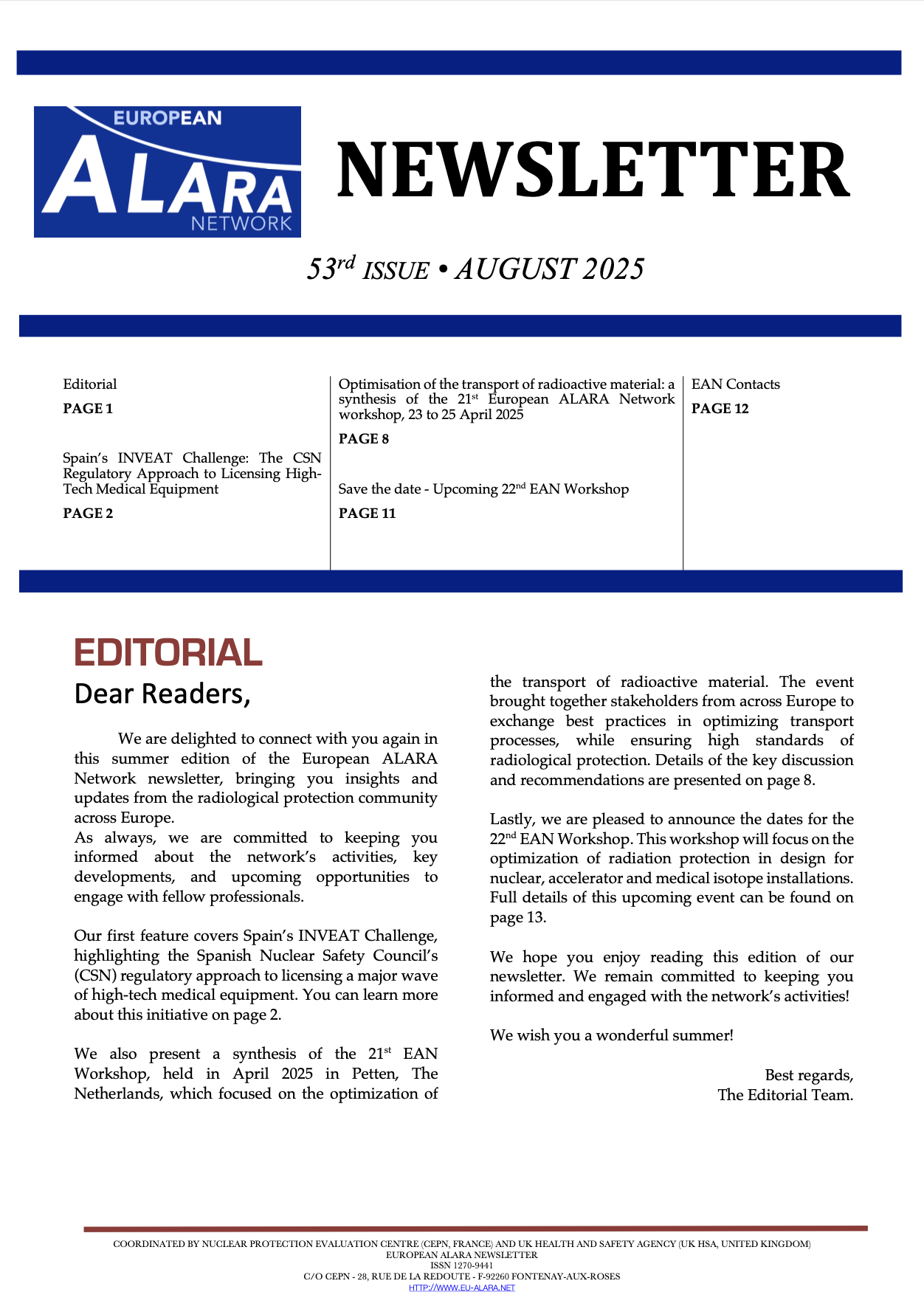
In this issue, you will find:
-
Spain’s INVEAT Challenge: a closer look at the Spanish Nuclear Safety Council’s (CSN) regulatory approach to licensing a major wave of high-tech medical equipment (p.2).
-
Highlights from the 21st EAN Workshop (April 2025, Petten, The Netherlands), which focused on the optimization of the transport of radioactive material and gathered stakeholders from across Europe to exchange best practices (p.8).
-
Save the date! Announcement of the 22nd EAN Workshop, dedicated to optimizing radiation protection in design for nuclear, accelerator, and medical isotope installations (p.13).
The Editorial Board. —
EAN’s 22nd Workshop heads to Belgium in April 2026!
📢 We are on LinkedIn!
Follow us to stay updated on our latest news, upcoming events, publications, and more.
We’ll be sharing highlights from our work, insights from our members, and opportunities to get involved.
👉 Link here !
21st EAN Workshop - Optimization of the transport of radioactive material
The 21st EAN Workshop on the Optimization of the transport of radioactive material took place from April 23 to 25, 2025 in Petten, The Netherlands.
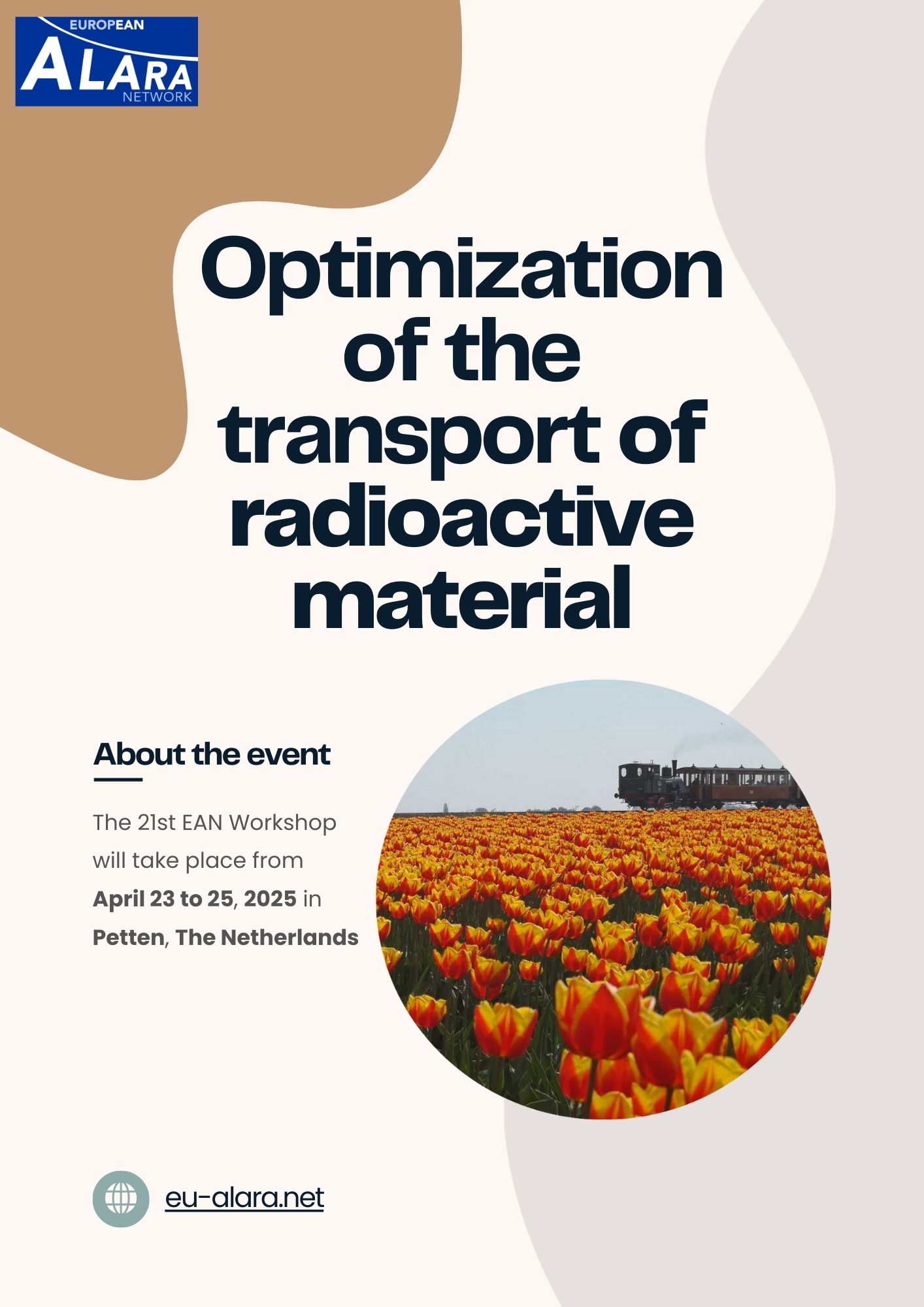
Find the program and the presentations below.
